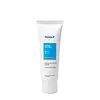What's inside
What's inside
 Key Ingredients
Key Ingredients

 Benefits
Benefits

 Concerns
Concerns

No concerns
 Ingredients Side-by-side
Ingredients Side-by-side

Water
Skin ConditioningEthylhexyl Salicylate
UV AbsorberDimethicone
EmollientPEG-10 Glyceryl Stearate
EmulsifyingHomosalate
Skin ConditioningC12-15 Alkyl Benzoate
AntimicrobialGlycerin
HumectantPolyhydroxystearic Acid
EmulsifyingDisodium Acetyl Glucosamine Phosphate
Skin ConditioningMethylene Bis-Benzotriazolyl Tetramethylbutylphenol
UV FilterSilica
AbrasiveC13-14 Isoparaffin
EmollientCaprylhydroxamic Acid
C20-22 Alkyl Phosphate
EmulsifyingNiacinamide
SmoothingBis-Ethylhexyloxyphenol Methoxyphenyl Triazine
Skin ConditioningCamellia Sinensis Leaf Extract
AntimicrobialCentella Asiatica Extract
CleansingCaesalpinia Spinosa Gum
Skin ConditioningBHT
AntioxidantCitric Acid
BufferingWater, Ethylhexyl Salicylate, Dimethicone, PEG-10 Glyceryl Stearate, Homosalate, C12-15 Alkyl Benzoate, Glycerin, Polyhydroxystearic Acid, Disodium Acetyl Glucosamine Phosphate, Methylene Bis-Benzotriazolyl Tetramethylbutylphenol, Silica, C13-14 Isoparaffin, Caprylhydroxamic Acid, C20-22 Alkyl Phosphate, Niacinamide, Bis-Ethylhexyloxyphenol Methoxyphenyl Triazine, Camellia Sinensis Leaf Extract, Centella Asiatica Extract, Caesalpinia Spinosa Gum, BHT, Citric Acid
Water
Skin ConditioningCoco-Caprylate/Caprate
EmollientDisodium Acetyl Glucosamine Phosphate
Skin ConditioningC13-15 Alkane
SolventNeopentyl Glycol Diheptanoate
EmollientGlycerin
HumectantDiisopropyl Sebacate
EmollientMethylene Bis-Benzotriazolyl Tetramethylbutylphenol
UV FilterXylitylglucoside
HumectantDiethylhexyl Butamido Triazone
UV AbsorberC20-22 Alkyl Phosphate
EmulsifyingCaprylhydroxamic Acid
Dimethicone
EmollientBis-Ethylhexyloxyphenol Methoxyphenyl Triazine
Skin ConditioningHydroxyethyl Acrylate/Sodium Acryloyldimethyl Taurate Copolymer
Emulsion StabilisingButylene Glycol
HumectantPrunus Yedoensis Leaf Extract
Skin ConditioningHydrogenated Rapeseed Oil
EmollientCaprylyl/Capryl Glucoside
CleansingAcacia Senegal Gum
MaskingPolyacrylate Crosspolymer-6
Emulsion StabilisingTrisodium Ethylenediamine Disuccinate
Arachidyl/Behenyl Alcohol
EmulsifyingXanthan Gum
EmulsifyingSodium Hydroxide
BufferingWater, Coco-Caprylate/Caprate, Disodium Acetyl Glucosamine Phosphate, C13-15 Alkane, Neopentyl Glycol Diheptanoate, Glycerin, Diisopropyl Sebacate, Methylene Bis-Benzotriazolyl Tetramethylbutylphenol, Xylitylglucoside, Diethylhexyl Butamido Triazone, C20-22 Alkyl Phosphate, Caprylhydroxamic Acid, Dimethicone, Bis-Ethylhexyloxyphenol Methoxyphenyl Triazine, Hydroxyethyl Acrylate/Sodium Acryloyldimethyl Taurate Copolymer, Butylene Glycol, Prunus Yedoensis Leaf Extract, Hydrogenated Rapeseed Oil, Caprylyl/Capryl Glucoside, Acacia Senegal Gum, Polyacrylate Crosspolymer-6, Trisodium Ethylenediamine Disuccinate, Arachidyl/Behenyl Alcohol, Xanthan Gum, Sodium Hydroxide
Ingredients Explained
These ingredients are found in both products.
Ingredients higher up in an ingredient list are typically present in a larger amount.
You might know this ingredient as Tinosorb S or Bemotrizinol. It is a UV filter that covers both UVA and UVB rays.
This ingredient has two peak UV absorption peaks ( 310 and 340 nm) and is able to absorb both UV-A and UV-B rays. This ingredient works by preventing UV rays from reaching and damaging your skin.
On top of that - it is highly photostable and helps prevent the photodegration of other sunscreen ingredients such as avobenzone.
Tinosorb S is allowed in the EU, Australia, and Asia. It is close to being approved by the FDA and we'll hopefully get this ingredient in the U.S. by late 2025.
Fun fact: Tinosorb S is the most effective UV absorber at maximum concentration (measured by SPF) permitted in the EU.
This ingredient is oil-soluble, so your oil-cleansers will take this right off at night.
Learn more about Bis-Ethylhexyloxyphenol Methoxyphenyl TriazineWe don't have a description for C20-22 Alkyl Phosphate yet.
Caprylhydroxamic Acid is a chelating agent.
Chelating agents help prevent metal ions from binding to other ingredients. This helps prevent unwanted reactions and effects from using the product.
Caprylhydroxamic Acid is often used with natural antimicrobial products as an alternative to preservatives.
Learn more about Caprylhydroxamic AcidDimethicone is a type of synthetic silicone created from natural materials such as quartz.
What it does:
Dimethicone comes in different viscosities:
Depending on the viscosity, dimethicone has different properties.
Ingredients lists don't always show which type is used, so we recommend reaching out to the brand if you have questions about the viscosity.
This ingredient is unlikely to cause irritation because it does not get absorbed into skin. However, people with silicone allergies should be careful about using this ingredient.
Note: Dimethicone may contribute to pilling. This is because it is not oil or water soluble, so pilling may occur when layered with products. When mixed with heavy oils in a formula, the outcome is also quite greasy.
Learn more about DimethiconeWe don't have a description for Disodium Acetyl Glucosamine Phosphate yet.
Glycerin is already naturally found in your skin. It helps moisturize and protect your skin.
A study from 2016 found glycerin to be more effective as a humectant than AHAs and hyaluronic acid.
As a humectant, it helps the skin stay hydrated by pulling moisture to your skin. The low molecular weight of glycerin allows it to pull moisture into the deeper layers of your skin.
Hydrated skin improves your skin barrier; Your skin barrier helps protect against irritants and bacteria.
Glycerin has also been found to have antimicrobial and antiviral properties. Due to these properties, glycerin is often used in wound and burn treatments.
In cosmetics, glycerin is usually derived from plants such as soybean or palm. However, it can also be sourced from animals, such as tallow or animal fat.
This ingredient is organic, colorless, odorless, and non-toxic.
Glycerin is the name for this ingredient in American English. British English uses Glycerol/Glycerine.
Learn more about GlycerinMethylene Bis-Benzotriazolyl Tetramethylbutylphenol (Tinosorb M) is a hybrid and broad-spectrum UV ingredient. It is both a UV absorber and filter.
UV absorbers are an agent that absorbs UV rays. They protect your skin by using chemical reactions to convert UV rays into heat and energy. UV filters physically reduce the amount of UV rays from reaching your skin.
Tinosorb M covers a range of 280-400 nm and is photostable. This ingredient is neither oil or water soluble.
Tinosorb M is not available in the US. However, it is available in the EU and Asia.
It's sister, Tinosorb S, is set to be approved in the US by late 2025 (fingers crossed!).
Learn more about Methylene Bis-Benzotriazolyl TetramethylbutylphenolWater. It's the most common cosmetic ingredient of all. You'll usually see it at the top of ingredient lists, meaning that it makes up the largest part of the product.
So why is it so popular? Water most often acts as a solvent - this means that it helps dissolve other ingredients into the formulation.
You'll also recognize water as that liquid we all need to stay alive. If you see this, drink a glass of water. Stay hydrated!
Learn more about Water